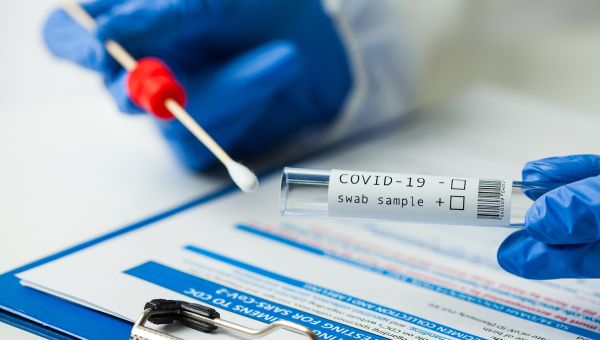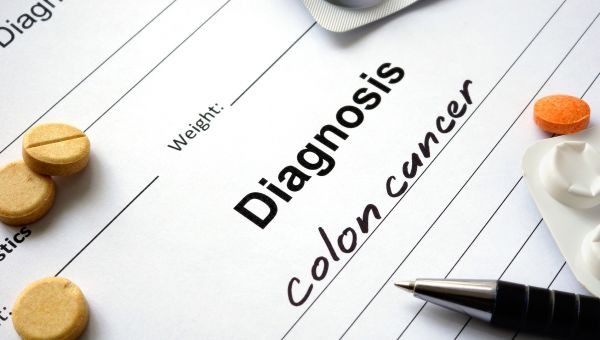Why are more Americans dying younger?
Get the facts on five startling health trends and learn ways to reduce your risk.
Updated on February 16, 2023

Life expectancy in the United States is on the decline. In 2021, average life expectancy was 76.4 years, a 0.6-year decrease from 2020—and a drop of 2.3 years from 2018, according to the Centers for Disease Control and Prevention (CDC). Death rates increased from 2020 to 2021 for each age group measured, with the largest increases coming among those aged 25 to 34 (an… Show More
Life expectancy in the United States is on the decline. In 2021, average life expectancy was 76.4 years, a 0.6-year decrease from 2020—and a drop of 2.3 years from 2018, according to the Centers for Disease Control and Prevention (CDC). Death rates increased from 2020 to 2021 for each age group measured, with the largest increases coming among those aged 25 to 34 (an increase of 13.4 percent), 35 to 44 (a rise of 16.1 percent), and 45 to 54 (12.1 percent).
What’s putting Americans at risk, particularly young and middle-aged adults? Here are five surprising trends everyone should know about.
Show Less
COVID-19 has taken a toll
The pandemic era has had a profound effect on younger Americans. While the vast majority of COVID deaths have been among adults aged 65 and older, nearly 46,000 Americans under 45 have died from COVID, according to CDC data as of February 2023. Research also suggests that significant numbers of… Show More
The pandemic era has had a profound effect on younger Americans. While the vast majority of COVID deaths have been among adults aged 65 and older, nearly 46,000 Americans under 45 have died from COVID, according to CDC data as of February 2023. Research also suggests that significant numbers of young adults are experiencing longer effects of COVID.
Pandemic life, with its isolation and social distancing, has also had a negative impact on the mental well-being of teens and young adults. Depression and anxiety have increased in young people, contributing to poorer health overall.
An important way to reduce your risk of serious complications is to get a COVID vaccination. The vaccines have been shown to be safe and effective, and it’s never too late to add that layer of protection. Speak with an HCP if you have any questions about the shots or if you have any lingering symptoms from a bout with COVID that haven’t cleared up.
Show Less
Suicide rates have risen
The U.S. suicide rate increased 4 percent between 2020 and 2021, according to the CDC. Prior to 2020, the rate of suicide in the U.S. was declining. In 2021, suicide accounted for 14 deaths per 100,000 people, up from 13.5 deaths per 100,000 people in 2020. Rates were higher among males than… Show More
The U.S. suicide rate increased 4 percent between 2020 and 2021, according to the CDC. Prior to 2020, the rate of suicide in the U.S. was declining. In 2021, suicide accounted for 14 deaths per 100,000 people, up from 13.5 deaths per 100,000 people in 2020. Rates were higher among males than females. While the rate rose for every age group under 75, it increased most in males ages 15 to 24, by 8 percent.
Researchers can only make educated guesses about the reasons for these trends. For younger people, lack of access to mental health resources and financial hardship may play significant roles. Financial hardship in relation to the COVID-19 pandemic may also be a factor. A 2022 study published in Frontiers in Public Health suggested that greater assistance at the population level—such as broad unemployment benefits and a higher minimum wage—could help lower suicide rates overall.
Help is available. If you or someone you know is in crisis, call, text, or chat 988 to reach the 988 Suicide & Crisis Lifeline. If you know someone who is considering suicide, call 911 or go to the nearest emergency room, and stay with them until they receive the help they need.
Show Less
Opioids have taken large numbers of young people
Drug overdoses have risen sharply over the years. The CDC attributed 91,799 deaths to overdoses in 2020, and the rates were highest for adults aged 35 to 44.
About 75 percent of overdose deaths in 2020 involved opioids, a class of drugs that includes heroin and painkillers such as fentanyl and… Show More
Drug overdoses have risen sharply over the years. The CDC attributed 91,799 deaths to overdoses in 2020, and the rates were highest for adults aged 35 to 44.
About 75 percent of overdose deaths in 2020 involved opioids, a class of drugs that includes heroin and painkillers such as fentanyl and oxycodone. Opioids are typically prescribed for pain relief, but over-prescription and misuse can lead to addiction.
If you are struggling with opioid addiction, organizations like Narcotics Anonymous and the Substance Abuse and Mental Health Services Administration (SAMSHA) national helpline (800-662-4357) can provide support, education, and encouragement to help you through withdrawal and to help prevent relapse.
Show Less
Colon cancer doesn’t always wait until your 50s
Colon cancer rates have been falling since the mid-1980s, with an alarming exception: cases among people under 50 years old are on the rise. During 2012 to 2016, cases rose by about 2.2 percent each year for people under 50, according to the American Cancer Society (ACS). What’s more, death… Show More
Colon cancer rates have been falling since the mid-1980s, with an alarming exception: cases among people under 50 years old are on the rise. During 2012 to 2016, cases rose by about 2.2 percent each year for people under 50, according to the American Cancer Society (ACS). What’s more, death rates from colorectal cancer have increased for people younger than 50 by 1.3 percent per year since 2004.
For this reason, both the U.S. Preventive Services Task Force (USPSTF) and ACS recommend that people at an average risk should begin regular screening for colon cancer at age 45. (Both groups previously recommended that screening begin at 50.) You’ll likely be advised to get your first screening test earlier than that if you’re at high risk: if you have a strong family history, for example, or if you are Black.
Experts aren’t exactly sure why colon cancer is on the rise among young and middle-aged adults, but many cancers can be traced to certain lifestyle factors. Diets high in animal fats and low in fiber can increase risk, as can a lack of regular physical activity. Quitting smoking and exercising regularly are proven ways to lower your risk.
If you’re 45 or older and haven’t been screened yet, make an appointment with an HCP to talk about the colon cancer screening test that makes the most sense for you.
Show Less
Heart attack risk may be higher than you think
Heart disease affects people of all ages, but rates of heart attack have been on the rise among younger people.
A 2020 study published in the American Journal of Medicine found that among more than 2,000 patients under 50 who had a heart attack, almost a quarter (21 percent) were 40 years old or… Show More
Heart disease affects people of all ages, but rates of heart attack have been on the rise among younger people.
A 2020 study published in the American Journal of Medicine found that among more than 2,000 patients under 50 who had a heart attack, almost a quarter (21 percent) were 40 years old or younger, with the size of that younger group increasing by 1.7 percent each year between 2007 to 2016. Various factors play a role, some of which may be under your control.
Easy access to convenience foods rich in saturated fat and simple carbohydrates is a big factor. Excessive sitting—whether at work, home, or school—combined with a general lack of physical activity among Americans of all ages, including young adults, also plays a role. Other factors may include high stress levels, social isolation, and the widespread use of tobacco, alcohol, and recreational drugs, such as marijuana and cocaine.
If you don’t already have a regular schedule of checkups with a healthcare provider (HCP), make an appointment today. Checking in on a routine basis can help you make healthy tweaks to your lifestyle—and help you catch small problems before they turn into big ones.
Show Less
Centers for Disease Control and Prevention. Mortality in the United States, 2021. NCHS Data Brief No. 456, December 2022.
Centers for Disease Control and Prevention. Mortality in the United States, 2018. NCHS Data Brief No. 355, January 2020.
Centers for Disease Control and Prevention. Suicide Increases in 2021 After Two Years of Decline. NCHS Report No. 24, September 2022.
Centers for Disease Control and Prevention. COVID-19 Mortality Overview. Provisional Death Counts for Coronavirus Disease 2019 (COVID-19). Page last reviewed: May 16, 2022.
Blomberg B, Mohn KG, Brokstad KA, et al. Long COVID in a prospective cohort of home-isolated patients. Nat Med. 2021;27(9):1607-1613.
Mathieu S, Treloar A, Hawgood J, et al. The Role of Unemployment, Financial Hardship, and Economic Recession on Suicidal Behaviors and Interventions to Mitigate Their Impact: A Review. Frontiers in Public Health. 2022;10.
Centers for Disease Control and Prevention. Drug Overdose Deaths Remain High. Death Rate Maps & Graphs, June 2022.
Centers for Disease Control and Prevention. Drug Overdose Deaths in the United States, 2001–2021. NCHS Data Brief No. 457, December 2022.
Stacey Simon. Colorectal Cancer Facts & Figures 2020-2022: Colorectal Cancer Rates Rise in Younger Adults. American Cancer Society. March 5, 2020.
American Cancer Society. American Cancer Society Guideline for Colorectal Cancer Screening. 2020.
Centers for Disease Control and Prevention. Colorectal Cancer: What Should I Know About Screening? Page last reviewed February 10, 2020.
Stacey Simon. Six Ways to Lower Your Risk for Colorectal Cancer. American Cancer Society. February 10, 2020.
Yang J, Biery DW, Singh A, et al. Risk Factors and Outcomes of Very Young Adults Who Experience Myocardial Infarction: The Partners YOUNG-MI Registry. The American Journal of Medicine. 2020;133(5):605-612.e1.
Zasada W, Bobrowska B, Plens K, et al. Acute myocardial infarction in young patients. Kardiologia Polska (Polish Heart Journal). 2021;79(10):1093-1098.
Women’s Heart Foundation. Women and Heart Disease Facts. 2020.
Centers for Disease Control and Prevention. Heart Disease Facts. October 14, 2022.
Meherali S, Punjani N, Louie-Poon S, et al. Mental Health of Children and Adolescents Amidst COVID-19 and Past Pandemics: A Rapid Systematic Review. International Journal of Environmental Research and Public Health. 2021;18(7):3432.
More On


video

article

slideshow


video


video
